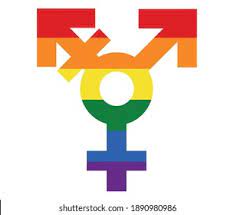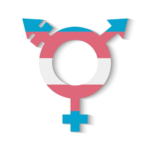Estrogen is often hailed as the superstar hormone in the female body, playing a critical role in multiple physiological processes. From regulating the menstrual cycle to supporting bone health and even influencing mood, estrogen is fundamental to many aspects of female biology. However, misconceptions abound regarding what estrogen can and cannot do. In this article, we will explore the essential functions of estrogen in women and clarify some common misunderstandings, ultimately highlighting areas where estrogen does not play a significant role.
What Is Estrogen and Why Is It Important for Females?
Estrogen is a group of hormones primarily produced in the ovaries, but also in smaller amounts by the adrenal glands and fat tissues. This hormone is crucial for the development and regulation of the female reproductive system and secondary sexual characteristics. Estrogen levels fluctuate throughout a woman’s life, particularly during puberty, the menstrual cycle, pregnancy, and menopause. Understanding its functions can help women navigate various life stages and health concerns.Science Behind TransgenderTransgender Vagina
Beyond reproduction, estrogen influences various bodily systems, contributing to overall health and well-being. Its protective effects on the cardiovascular system, brain, and bones make it an essential player in maintaining quality of life for women. With estrogen’s broad reach, it’s essential to recognize its role so that women can appreciate its benefits while also being aware of its limitations.
Key Functions of Estrogen in the Female Body Explained
One of estrogen’s primary functions is regulating the menstrual cycle. This hormone helps to build up the uterine lining, preparing it for a potential pregnancy. If fertilization does not occur, estrogen levels drop, leading to menstruation. This cyclical process not only affects reproductive health but also influences mood and energy levels throughout the month.
Additionally, estrogen plays an essential role in the development of female secondary sexual characteristics, such as breast development and the distribution of body fat. It also supports the health of the skin and helps regulate cholesterol levels, thereby promoting cardiovascular health. These functions highlight the multifaceted nature of estrogen and its importance in maintaining women’s health throughout their lives.
How Estrogen Influences Menstrual Cycle Regularity
Estrogen is a key player in the menstrual cycle, particularly during the follicular phase. At the beginning of this phase, estrogen levels begin to rise, stimulating the growth of ovarian follicles and the thickening of the endometrium. In a typical cycle, this rise in estrogen leads to ovulation, as it triggers the release of luteinizing hormone (LH).
However, fluctuations in estrogen levels can also lead to irregular periods. Factors such as stress, diet, and hormonal imbalances can disrupt this delicate hormonal interplay, leading to irregularities. Understanding how estrogen regulates this critical process can empower women to better manage their reproductive health.
The Role of Estrogen in Pregnancy and Childbirth
During pregnancy, estrogen levels soar to support the developing fetus. This hormone enhances blood flow to the uterus, promotes the growth of the placenta, and ensures that the fetal organs develop correctly. Estrogen also plays a role in preparing the body for labor by helping to soften and relax the cervix.
Postpartum, estrogen levels drop significantly, but this is a normal part of recovery. While low estrogen post-birth can lead to some discomfort, such as vaginal dryness, it is vital for women to understand that this phase is temporary. As the body readjusts, estrogen levels will stabilize over time, allowing women to transition into motherhood more comfortably.
Estrogen’s Impact on Bone Health in Women
Estrogen is critical for maintaining bone density in women. It helps to inhibit the activity of osteoclasts, the cells responsible for bone resorption, while promoting the activity of osteoblasts, which build new bone. This balancing act is essential for preventing osteoporosis, a condition where bones become weak and brittle.
As women approach menopause, estrogen levels decline significantly, leading to an increased risk of bone density loss. Awareness of this risk can motivate women to engage in preventive measures such as weight-bearing exercises and a diet rich in calcium and vitamin D, thus ensuring long-term bone health.
Brain Benefits: How Estrogen Affects Mood and Memory
Estrogen is not just a reproductive hormone; it has profound effects on brain function as well. Studies have shown that it can enhance cognitive functions, including memory and learning. Estrogen receptors are found throughout the brain, indicating that this hormone plays a role in various neurological processes.
Additionally, estrogen has been linked to mood regulation. Many women report experiencing mood swings during their menstrual cycles, which can be attributed to fluctuating estrogen levels. Understanding the connection between estrogen and mental health can help women recognize patterns in their mood and seek appropriate support when needed.
Common Misconceptions About Estrogen Functions in Women
Despite its importance, several misconceptions about estrogen persist. One common myth is that all women need high estrogen levels for optimal health. In reality, estrogen levels vary throughout a woman’s life and overly high levels can lead to issues like hormonal imbalances or increased risk of certain cancers. Balance is key when it comes to hormone health.
Another misconception is that estrogen solely defines femininity. While it plays a significant role in female development, women also produce other hormones, like progesterone and testosterone, which contribute to their overall health and well-being. Recognizing the interplay of these hormones can lead to a more nuanced understanding of women’s health.
Estrogen Functions In Females In All Of The Following Except
While estrogen is involved in various essential functions in the female body, there are areas where it has little to no influence. One key area is muscle mass development; while testosterone plays a more significant role in muscle growth and strength, estrogen’s influence here is minimal. Women can build muscle effectively through resistance training, regardless of estrogen levels.
Additionally, estrogen does not directly impact metabolic rates or fat burning. While it can influence fat distribution, factors like diet, exercise, and overall lifestyle choices primarily govern metabolism. Understanding these limitations is crucial for women seeking to optimize their health and fitness outcomes, as focusing solely on estrogen may lead to misconceptions about their body’s capabilities.
In conclusion, estrogen is a powerful and vital hormone in the female body, influencing a myriad of functions from reproductive health to mood and bone density. However, it is essential to dispel misconceptions about its roles and recognize where its influence may be limited. By understanding what estrogen can do—and what it can’t—women can make informed choices about their health, navigate life stages more effectively, and appreciate the complexity of their bodies. Remember, balance and awareness are key to harnessing the benefits of this remarkable hormone!


